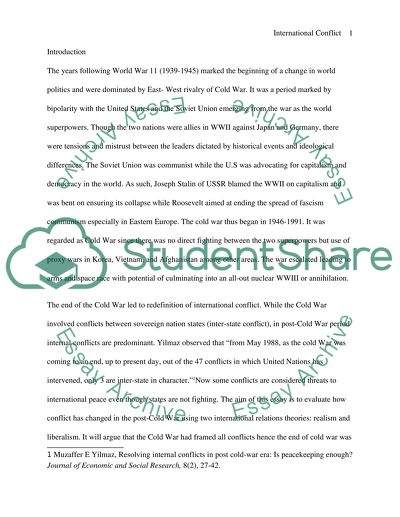Cite this document
(“How has conflict changed in the post-Cold War world Explain this Research Paper”, n.d.)
How has conflict changed in the post-Cold War world Explain this Research Paper. Retrieved from https://studentshare.org/social-science/1652643-how-has-conflict-changed-in-the-post-cold-war-world-explain-this-change-using-two-ir-theories-note-this-question-poses-the-end-of-the-cold-war-as-a-watershed-in-contemporary-conflict-the-cold-war-had-framed-all-conflict-through-the-lens-of-superpower
How has conflict changed in the post-Cold War world Explain this Research Paper. Retrieved from https://studentshare.org/social-science/1652643-how-has-conflict-changed-in-the-post-cold-war-world-explain-this-change-using-two-ir-theories-note-this-question-poses-the-end-of-the-cold-war-as-a-watershed-in-contemporary-conflict-the-cold-war-had-framed-all-conflict-through-the-lens-of-superpower
(How Has Conflict Changed in the Post-Cold War World Explain This Research Paper)
How Has Conflict Changed in the Post-Cold War World Explain This Research Paper. https://studentshare.org/social-science/1652643-how-has-conflict-changed-in-the-post-cold-war-world-explain-this-change-using-two-ir-theories-note-this-question-poses-the-end-of-the-cold-war-as-a-watershed-in-contemporary-conflict-the-cold-war-had-framed-all-conflict-through-the-lens-of-superpower.
How Has Conflict Changed in the Post-Cold War World Explain This Research Paper. https://studentshare.org/social-science/1652643-how-has-conflict-changed-in-the-post-cold-war-world-explain-this-change-using-two-ir-theories-note-this-question-poses-the-end-of-the-cold-war-as-a-watershed-in-contemporary-conflict-the-cold-war-had-framed-all-conflict-through-the-lens-of-superpower.
“How Has Conflict Changed in the Post-Cold War World Explain This Research Paper”, n.d. https://studentshare.org/social-science/1652643-how-has-conflict-changed-in-the-post-cold-war-world-explain-this-change-using-two-ir-theories-note-this-question-poses-the-end-of-the-cold-war-as-a-watershed-in-contemporary-conflict-the-cold-war-had-framed-all-conflict-through-the-lens-of-superpower.


